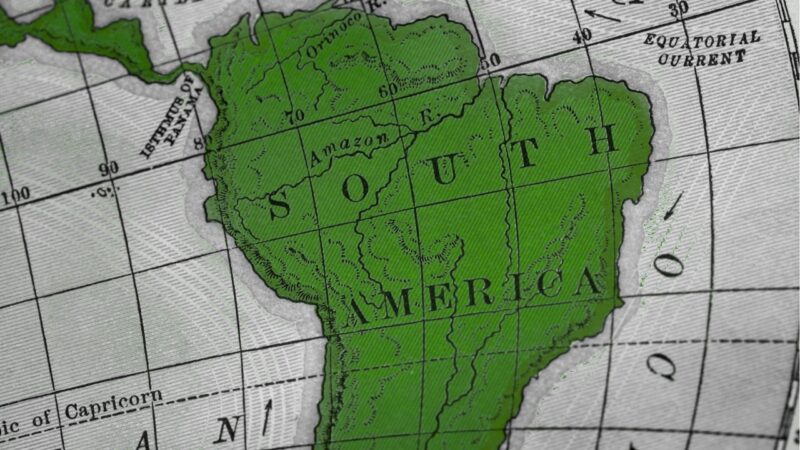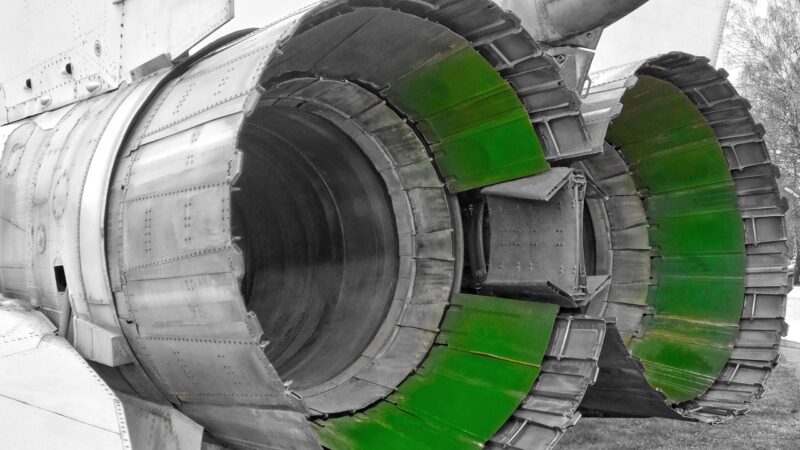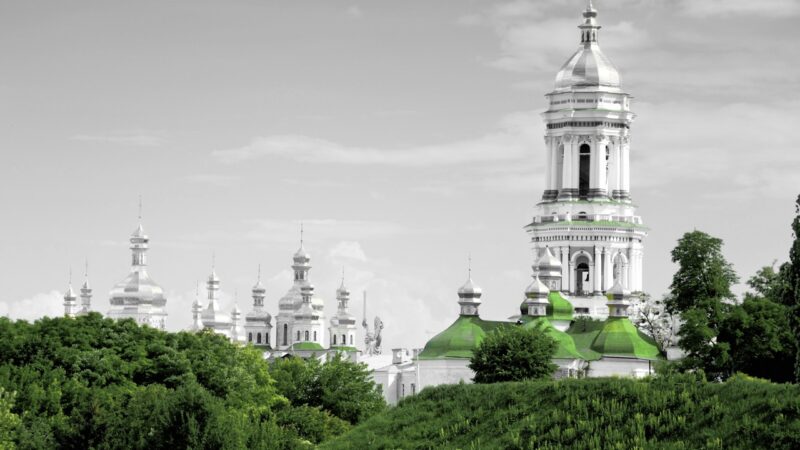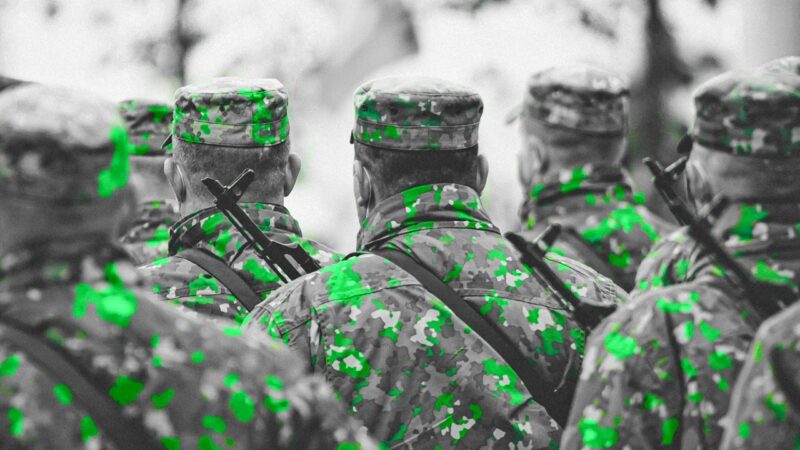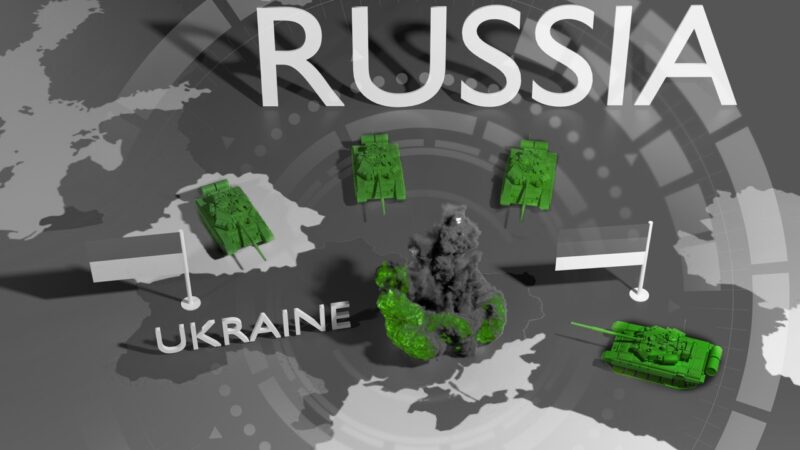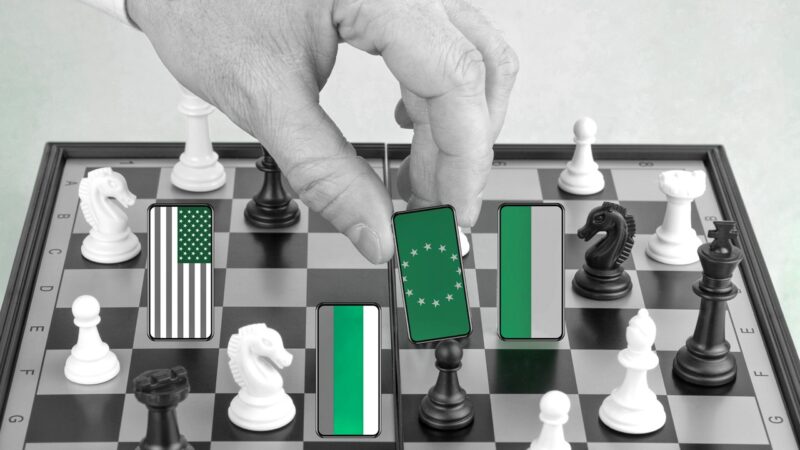The Russian-Ukrainian war: Im(possible) peace?
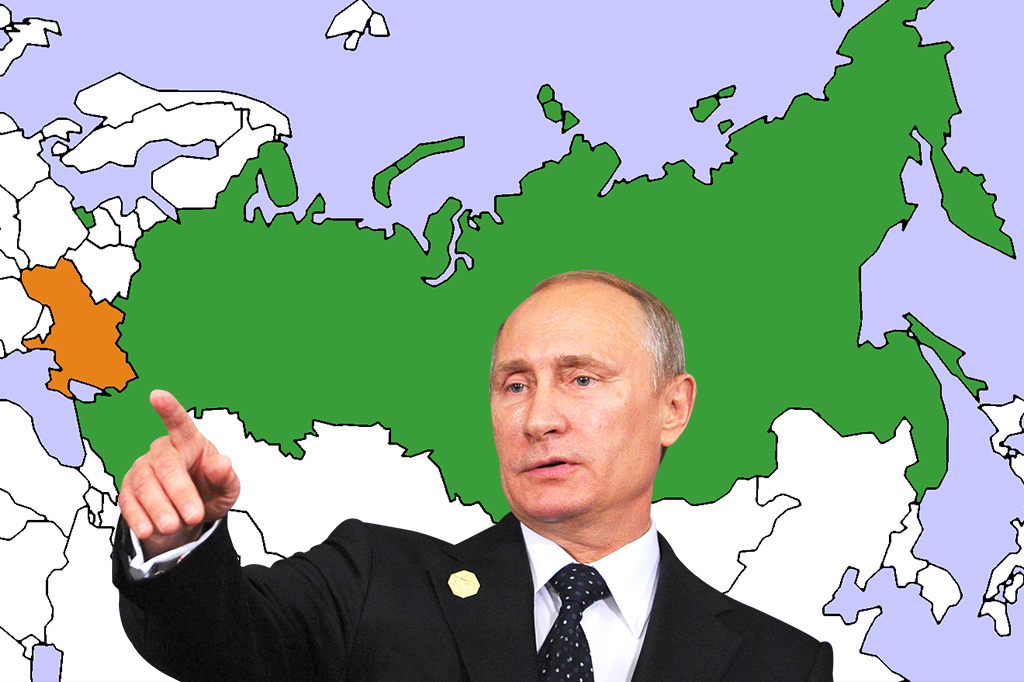
Russian-Ukrainian tensions rise toward the end of 2021
At the beginning of March 2021, under the pretext of preparing for military exercises Russia sent troops and equipment to its border with Ukraine and to occupied Crimea. In November 2021 the Russian Federation again deployed its military forces on the border with Ukraine, raising fears of a new round of armed clashes.[1] Although this is not the first time Russia has dramatically increased the concentration of troops on its border with Ukraine, an important marker of the seriousness of the current situation was the sudden visit to Moscow by CIA head William Burns.[2] The military build-up has raised fears of a possible Russian offensive that could extend beyond the territories in eastern Ukraine currently controlled by the Kremlin and lead to a dramatic escalation of the simmering conflict between the two countries, which has been ongoing since 2014, when Russia invaded and occupied Crimea (an autonomous republic in Ukraine with native Tatar self-government) and parts of the Donbas (Donets Basin, administratively in Ukraine’s Donetsk and Luhansk oblasts).
Political tensions have been steadily escalating between Kyiv and Moscow. In February Ukraine imposed sanctions on Viktor Medvedchuk, who is connected directly to Putin, and banned broadcasts by the three pro-Russian television channels owned by Medvedchuk’s ally Taras Kozak. Vladimir Putin has hinted broadly that his patience with Kyiv is running out. Most recently, in an epic article in summer 2021 Putin questioned the legitimacy of Ukraine’s borders and laid bare his own imperial ambitions.[3] Former Russian president Dmitri Medvedev also published an article,[4] where he outlined five reasons why he believes it is “meaningless” to engage in talks with the current Ukrainian authorities. His style and the vulgar language of the article show the degree of the Kremlin’s posturing of anger and dissatisfaction with Ukraine.
There are two main “hot” areas where the historic Russian-Ukrainian conflict is the most visible: the Donbas and the Black-Azov seas area. Belarus became another point of potential threat for Ukraine.
Situation in the Donbas under Zelensky’s presidency
Despite some achievements in 2019–20 (mainly in humanitarian aspects), a solution to the war in the Donbas is far away. Russia’s attitude toward Ukraine or regarding conflict resolution is unchanging. Its main goal is to push the Ukrainian government into direct negotiations with representatives of the occupational administrations of the self-styled Donetsk and Luhansk people’s republics (DNR/LNR). In response, Ukraine’s position has remained unequivocal: legitimate elections in the occupied parts of the Donbas should take place only in a secure environment—namely, after the withdrawal of Russian troops and return of the eastern border to Ukrainian control. Furthermore, contrary to the Kremlin’s demands, the topic of Crimea is not off the agenda. However, Ukraine has not managed to present a realistic vision for the resolution of the conflict or a strategy for re-integrating the occupied parts of Eastern Ukraine without the Kremlin’s willingness to cooperate.[5]
The main obstacles to ending the war in the Donbas are not only different approaches toward the negotiations but the fundamentally different aims of Russia and Ukraine. For Ukraine, the end of its conflict with Russia would require the restoration of its sovereignty, while Russia expects to always keep Ukraine in its “sphere of privileged interests” and influence Ukrainian internal affairs. As summarized by the British analyst Duncan Allan concerning the dilemma of the Minsk Agreements: “Ukraine views the Minsk Process as a chance to restore its sovereignty, whereas Russia sees it as an opportunity to curtail this sovereignty.”[6] Domestic policy obviously plays an important role in both cases. President Zelensky’s options are limited: even if he could accept Moscow’s deal, Ukrainian society would not accept “peace under any conditions.”
The cease-fire regime in the Donbas that was introduced on 27 July 2020 is nominally in effect but with systematic violations by the Russian-backed fighters. Moreover, in 2021 the situation has significantly deteriorated. Russian mercenaries and snipers have become active in the region again, killing more than 40 Ukrainian soldiers since the beginning of the year. Russia has continued its practice of granting citizenship to Ukrainian residents of the occupied Donbas territories, already distributing more than 650,000 Russian passports.
In essence, the negotiations under the Minsk format have reached a dead end, with Russia not having managed to achieve its aim to implement it on its own conditions. The main requirement of the Russian Federation for the continuation of negotiations on the Donbas is that representatives of the LNR/DNR should be recognized as the only party with which the Ukrainian military command to conduct a dialogue on the ceasefire regime and to further resolve issues toward a peaceful settlement.
The Normandy format also seems to be unviable as a platform for negotiations. Ukrainian Foreign Minister Dmytro Kuleba declared recently that with its latest actions, including the leak of confidential diplomatic correspondence, Russia is “finishing” the Normandy format of talks on settling the Donbas war and undermining what is left of international trust.[7]
Compounded with the growing military exercises of the RF, this increases the likelihood of escalation of active fighting in the Donbas in the months to come. Moscow can again use its favourite tactics to increase tensions and blackmail Ukraine, with the end game of gaining a better negotiating position. A British House of Commons Report concluded: “Russia has several probable motives for escalating tensions on the border with Ukraine, driven by regional insecurities and President Putin’s willingness to engage in power politics. Russia is using its military for coercive diplomacy, to pressure the Ukrainian Government to make concessions in the political settlements for the Donbas and to test Western allies’ resolve to come to Ukraine’s aid.”[8]
According to the Ukrainian security services (media releases[9]), this past spring the DNR leadership was working on three versions of an appeal to Vladimir Putin. The first one was a request for military assistance. The second was for the DNR to accede to Russia. The third was to recognize the independence of the DNR and conclude a treaty of friendship and cooperation between the DNR and the Russian Federation. If Kremlin decided to accept one of these scenarios (most probably the first one) it would be easy to organize provocations and—under the pretext of “defending its own citizens and the population of the Donbas” to (re)commence military actions against Ukraine.
Russia’s goals in the potential escalation
Russia has essentially reached its limits concerning its possibilities to exert pressure on Ukraine, but it cannot accept real peace in a Donbas under Ukrainian control, as it would be perceived as weakness of the Kremlin and personally of Vladimir Putin.
Thus, we believe that Russia’s military maneuvers have primarily political objectives.
First, Russia is seeking to “reset” its negotiations with the West (not only with regard to Ukraine) through its traditional strategy of military-political blackmail. Second, through its demonstration of military might the Kremlin is trying to force Kyiv to be more accommodating and compliant. In this context, Moscow will again insist on “direct dialogue” with the occupation administrations of the DNR/LNR as well as on changes to the Ukrainian Constitution and elections in the occupied territories without giving up control of the border (which de facto means legitimizing the existing occupation administrations). And third, Russia is desperate to prevent Ukraine’s rapprochement and deeper cooperation with NATO. According to Moscow’s scenario, a settlement in the Donbas war cannot proceed without the West and Ukraine committing to non-aligned status for Ukraine, that is, preventing its ever becoming a NATO member.
The Black-Azov Seas area
Since the annexation of the Crimean peninsula by Russia in 2014, the Black Sea area has gradually turned into the hotbed of mutual NATO-Russia tensions. In this context, Russia’s supremacy in the Black Sea becomes critical for restoring its domination in Black Sea region. This situation indicates the clear intentions of Moscow to turn the Black Sea into its anti-access/area denial (A2/AD) zone, where its annexation of Crimea is presented as fait accompli.[10] As claimed by Steven Blank,[11] the Russian arms build-up in the Black Sea area is clearly not just a defensive formation but an offensive one against all the other littoral states. This combined arms build-up has generated a formidable force to deny access to the Black Sea by NATO or its friendly partners like Georgia and Ukraine.
Moscow often justifies its aggressive behavior together with intensive military build-ups by alleging threats coming from hostile moves by NATO, particularly concerning European missile defense capacity. Meanwhile, besides solely military threats Russia employs a variety of tools to influence countries that border the Black Sea—economic, political, diplomatic, media influence etc. Bugajski and Doran have indicated that Russia’s use of the Black Sea is a more advantageous method of revisionism than extensive land conquests would be. Moscow could also utilize its power and influence in the Black Sea to challenge and disrupt energy supplies via a pipeline from the Caspian Basin to Europe. The Nord Stream 2 and TurkStream pipeline projects are good examples of how Russia is using energy links to further its political and security interests in Europe.
Meanwhile, the gradual increase of NATO military infrastructure as well as routine operations and exercises with Ukraine shows an understanding of the Black Sea’s importance for the security of the West. The NATO exercises “Steadfast Defender 2021” and “Sea Breeze 2021” showed NATO’s readiness and military mobility to counter Russian dominance in the Black Sea.
One of the main challenges in countering Russian activities is that Black Sea allies and partners have a diverse range of interests and threat perceptions with respect to Russia, making it difficult to achieve consensus on a multilateral response to Russian military posturing in the absence of overt aggression.[12] In particular, the position of Turkey is critical to any NATO response because of Turkish naval capabilities and its responsibility for the straits.
After the annexation of Crimea, the losses of the Ukrainian navy amounted to 75% of personnel and 70% of ships and key infrastructure.[13] Russia has effectively militarized Crimea, maintaining de facto control over 75% of Ukrainian maritime space and routinely preventing free navigation in the Black Sea (including the open use of conventional force in November 2018, when Russian warships seized three small Ukrainian military vessels on their way from the Black Sea to the Sea of Azov).
According to its “Strategy of the Naval Forces 2035,”[14] Ukraine’s “mosquito fleet,” to be created by 2025, will be based on three types of warship: patrol, amphibious, and missile boats. Mark VI and Island-class patrol boats supplied by the US already constitute the backbone of the future fleet. In June 2020 the US Government notified Congress of a possible Foreign Military Sale to Ukraine of up to sixteen Mark VI patrol boats worth an estimated $600 million.[15] Projects with the UK should cover the needs of the Ukrainian navy in terms of missile craft. Ukraine and the UK have agreed to implement the Ukrainian Naval Capabilities Enhancement Programme.[16] Including several projects, it envisages the development and joint production of eight fast missile warships, two of them to be built in British shipyards and the rest in Ukraine. The Ukrainian government will also purchase two refurbished British Sandown-class mine countermeasure vessels. Finally, the UK will help Ukraine to build two new naval bases on the Black Sea (Ochakiv) and the Sea of Azov (Berdyansk). The fleet is also to be equipped by Ada-class corvettes, to be jointly produced by Ukraine and Turkey.
Ukraine’s attempt to increase its security
Volodymyr Zelensky signed the “National Security Strategy of Ukraine” on 25 March 2021. This strategy is based on three basic principles of state policy in the sphere of national security:
- Restraint – development of defense and security capabilities to inhibit military aggression against Ukraine;
- Steadiness – the ability of the society and the state to adapt quickly to changes in the security-free environment and to maintain steel functioning, including through minimization of external and internal disruptions;
- Interaction – development of strategic relations with key foreign partners, primarily with the European Union, NATO, and the USA, as well as pragmatic cooperation with other states and international organizations on the basis of Ukraine’s national interests.
It is important that the Strategy envisages a scenario in which the Russian Federation could invade the territory of Ukraine. In addition, the document explicitly names Russia as an enemy.
Ukraine’s military strategy is focused on comprehensive defence, with deterrence and countering threats as the main objectives. President Volodymyr Zelensky approved the new Strategic Defense Bulletin of Ukraine (replaces the 2015 Military Doctrine) on 17 September 2021.[17] The Strategic Defense Bulletin was developed on the basis of the National Security Strategy of Ukraine and the Military Security Strategy of Ukraine.
The Strategic Defense Bulletin of Ukraine sets out the goal and vision of the defense force of the 2030 model, according to which the defense force is united by a single leadership and consist of professionally trained personnel, equipped with modern weapons that are capable of protecting the sovereignty and territorial integrity of Ukraine, being proactive and integrated into the Euro-Atlantic security architecture.
The 2018 Law on National Security required that at least 5% of GDP should be spent on security, with 3% of the total going to defense. Economic realities, however, often mean that defense spending in real terms is lower (around 2.5% of GDP). Ukraine’s 2021 defense budget is 117.6 billion hryvnias ($4.2 billion), which is 127 million hryvnia ($4.6 million) less than the 2020s budget.
In 2020 the Ministry of Defense of Ukraine[18] signed five international acts that broaden the range of international aid for the development of Ukraine’s Armed Forces capabilities, namely:
- Memorandum of Understanding between Ukraine and the UK on cooperation in development and enhancement of the capabilities of the Military and Maritime Forces of the Ukrainian Army;
- Framework Military Agreement between Ukraine and the Republic of Turkey;
- Implementation of the Agreement on Cooperation in the Field of Institutional Defense Reform between Ukraine and Canada;
- Treaty between Ukraine and the Kingdom of Saudi Arabia on cooperation in the defense sphere;
- Memorandum of Understanding between Ukraine and the Republic of Iraq concerning military cooperation.
One of the main pillars of Ukraine’s efforts to neutralize the Russian threat is to obtain international support and increase sanctions on the RF.
For example, the Crimea Platform was established by President Zelensky in February 2021 in order to build a coordinated international effort to pressure Russia to de-occupy the Crimean Peninsula. The inaugural Summit of the Crimea Platform was held in Kyiv on 23 August, with representatives of forty-six countries.[19] Ukraine hopes to consolidate international efforts in this area, and the initiative will focus on tasks such as enforcing sanctions and countering Russia’s militarization of Crimea, as well as monitoring human rights and environmental threats.
Meanwhile, it appears that Biden’s administration is preferring to preserve the current status quo in its relations with Russia, which in practice means the US’s refusal to take steps that could fundamentally challenge Kremlin or cross Russia’s red lines.
On 12 June 2020 Ukraine received the status of NATO Enhanced Opportunities Partner.[20] But the question of Ukraine’s full membership in the Alliance seems unrealistic in today’s perspective. During the June 2021 NATO summit,[21] formally the 2008 Bucharest summit’s decision was repeated that NATO’s door is potentially open for Ukraine, but there is no chance for it in the nearest future. At the same time, US support for Ukraine is firm and consistent. US military assistance to Ukraine has totalled $2.5 billion since 2014, including more than $400 million in 2021. The Pentagon and Ukraine’s Ministry of Defense signed a Strategic Defense Framework for defense and security cooperation in 2021.
Furthermore, the UK and Ukraine have built a strong defence relationship in recent years.[22] They recently signed a Political, Free Trade and Strategic Partnership Agreement[23] which also formalizes the UK-Ukraine strategic partnership in the security and defence sphere. British strategic documents updated in March 2021 define support to Ukraine as the basis of the UK’s policy in the region.[24] The UK’s naval presence in the Black Sea has also been on the rise since 2014. Following the Russia’s annexation of Crimea, the UK and Ukraine established a UK training mission in 2015, called Operation Orbital. Since then, the MOD says, British troops have trained over 20,000 Ukrainian Armed Forces personnel.[25] In June 2021, the British destroyer HMS Defender conducted a “freedom of navigation operation” in the Black Sea, which was a signal of solidarity with Ukraine that put a spotlight on the Ukraine’s involvement in the Black Sea and the emerging Ukraine-Ukraine strategic defense partnership.
Conclusion
The conflict between Russia and Ukraine has a longstanding strategic and even ontological character. Russia has no interest in a real peace for Ukraine and wants to keep the country as destabilized as possible. Putin’s speeches on many occasions highlight the constancy of his perception of the Ukrainian state as impermanent and of its existence as not justified by any reason. Because the Russian elite cannot accept the existence of an independent Ukraine (with constant emphasis on Ukraine’s full dependency, “failed state” status, disintegration, etc.), it will inevitably lead either to Ukraine being incorporated (in one form or another) into the sphere of “exclusive” Russian influence or to the Putin’s model of authoritarian regime, based on ideas of revanchism and the empire “getting up from its knees” being destroyed. In other words, the existence of an independent Ukraine is possible only if the Russian Federation undergoes a profound transformation. As at the moment there is no chance of such a change (at least in the short term). The war between the two countries will continue; only its intensity may increase or decrease, depending on the internal situation in the Russian Federation, the situation in the world, and the abilities of Ukraine to counteract Russian aggression.
Moreover, the Kremlin, having made Ukraine part of Russia’s domestic political agenda, cannot accept the loss of Ukraine or its successful reforms. The Kremlin cannot allow Ukraine to develop successfully (especially after 2014) because this would mean a failure of Russian efforts, which could become an example for its own opposition-minded citizens and inspire them to protest in Russia and in the whole post-Soviet space. That is why Ukraine as a failed state or a basket case is a condition sine qua non for the survival of the current Kremlin elites.
The scenario of developing a constant threat of conflict escalation and pushing Ukraine into endless internal confrontations will remain the basic formula for the Russian model of “controlled chaos” in the neighbouring country for the foreseeable future.
In the overall perception of the Kremlin, Russia continues to be at war with the West, and it is a multi-domain war. This war is not a frozen conflict but a multi-theatre confrontation that is highly dynamic and can be activated by Moscow in any domain that it wants, e.g., conventional escalation in Ukraine, Belarus, or any other place.
The attempts of some European countries to cooperate with Moscow in consensus mode or to “reset” relations are perceived by the Kremlin as weakness and will only provoke more aggressive actions on its part.
The EU must invest in both hard securities and soft security and governance measures to counteract the Russian threat and strengthen its member states. This also means blocking Russia’s energy strategies of isolating Ukraine and corrupting European states with its energy, instead forcing it to sell its oil and gas on a purely commercial basis, not as an instrument of political warfare.
[1] “Russia-Ukraine border: NATO warning over military build-up,” BBC, 16.11.2021; https://www.bbc.com/news/world-europe-59288181
[2] “CIA director dispatched to Moscow to warn Russia over troop buildup near Ukraine,” CNN, 05.11.2021; https://edition.cnn.com/2021/11/05/politics/bill-burns-moscow-ukraine/index.html
[3] Putin, Vladimir. “On the Historical Unity of Russians and Ukrainians,” 12.07.2021; http://en.kremlin.ru/events/president/news/66181
[4] Medvedev, Dmitry. “Pochemu bessmyslenny kontakty s nyneshnim ukrainskim rukovodstvom,” Kommersant, 11.10.2021; https://www.kommersant.ru/doc/5028300
[5] Polegkyi, Oleksii, and Tomasz Stepniewski, eds. “Conflict in Donbas: (Im)possible solutions and endless negotiation process,” IES Policy Papers 5, Institute of Central Europe (Poland), 2020.
[6] Duncan Allan. “The Minsk Conundrum: Western Policy and Russia’s War in Eastern Ukraine,” Chatham House, 22 May 2020; https://www.chathamhouse.org/publication/minsk-conundrum-allan
[7] “With its actions, Russia seeks to ‘finish’ Normandy format,” Ukrinform, 18.11.2021; https://www.ukrinform.net/rubric-polytics/3353167-with-its-actions-russia-seeks-to-finish-normandy-format-kuleba.html
[8] “Russia and Ukraine border tensions,” Report, House of Commons, 29 June 2021, p.12; https://committees.parliament.uk/publications/6567/documents/71219/default/
[9] “Glava DNR gotovit tri varianta obrashcheniya k Putinu,” ZN, April 10, 2021;
https://zn.ua/POLITICS/hlava-dnr-hotovit-tri-varianta-obrashchenija-k-putinu.html
[10] Polegkyi, Oleksii and Stepniewski, Tomasz (eds.) „Security dilemma in the Black Sea region in the light of the Russian-Ukrainian conflict”, IES Policy Papers, Institute of Central Europe, Poland, N4, 2021
[11] Ibid., Blank…
[12] Binnendijk, Anika. Understanding Russian Black Sea Power Dynamics Through National Security Gaming, RAND Corporation, 2020; https://www.rand.org/content/dam/rand/pubs/research_reports/RR3000/RR3094/RAND_RR3094.pdf
[13] Strategy of the Naval Forces of the Armed Forces of Ukraine 2035; https://navy.mil.gov.ua/en/strategiya-vijskovo-morskyh-syl-zbrojnyh-syl-ukrayiny-2035/
[14] Ibid.
[15] U.S. Security Cooperation With Ukraine, July 2, 2021; https://www.state.gov/u-s-security-cooperation-with-ukraine/
[16] UK signs agreement to support enhancement of Ukrainian naval capabilities, 23 June 2021; https://www.gov.uk/government/news/uk-signs-agreement-to-support-enhancement-of-ukrainian-naval-capabilities
[17] Head of State approves Strategic Defense Bulletin of Ukraine, 17 September 2021; https://www.president.gov.ua/en/news/glava-derzhavi-zatverdiv-strategichnij-oboronnij-byuleten-uk-70713
[18] “Analiz stanu mizhnarodnoho spivrobitnytstva v Ministerstvi oborony Ukrayiny ta Zbroynykh Sylakh Ukrayiny za 2020 rik”, Ministry of Deffence of Ukraine, June 11, 2021; https://www.mil.gov.ua/diyalnist/mizhnarodne-spivrobitnicztvo/analiz-stanu-mizhnarodnogo-spivrobitnicztva-u-ministerstvi-oboroni-ukraini-ta-zbrojnih-silah-ukraini-za-2020-rik.html
[19] “Deoccupation of Crimea begins in Kyiv: overview of Crimea Platform’s inaugural summit,” Ukraine Crisis Media Center, 24.08.2021; https://uacrisis.org/en/deoccupation-of-crimea-begins-in-kyiv-overview-of-crimea-platform-s-inaugural-summit
[20] NATO recognises Ukraine as Enhanced Opportunities Partner, NATO, 12 June 2020; https://www.nato.int/cps/en/natohq/news_176327.htm
[21] Brussels Summit Communiqué, NATO 14 June 2021; https://www.nato.int/cps/en/natohq/news_185000.htm
[22] Vorotnyuk, Maryna. UK–Ukraine Security Cooperation, RUSI, 10 November 2021; https://rusi.org/explore-our-research/publications/commentary/uk-ukraine-security-cooperation
[23] UK-Ukraine political, free trade and strategic partnership agreement; https://www.gov.uk/government/collections/uk-ukraine-political-free-trade-and-strategic-partnership-agreement
[24] Global Britain in a competitive age. The Integrated Review of Security, Defence, Development and Foreign Policy, March 2021; https://assets.publishing.service.gov.uk/government/uploads/system/uploads/attachment_data/file/975077/Global_Britain_in_a_Competitive_Age-_the_Integrated_Review_of_Security__Defence__Development_and_Foreign_Policy.pdf
[25] Ministry of Defence, Operation ORBITAL explained: Training Ukrainian Armed Forces, 21 December 2020; https://www.gov.uk/government/news/hundreds-of-uk-troops-parachute-into-ukraine-for-joint-exercises
